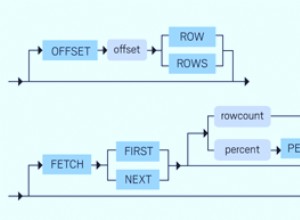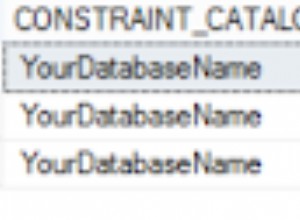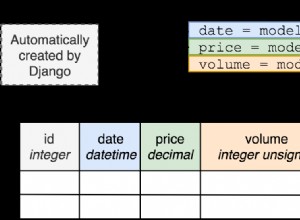Użyj DATENAME i opakuj logikę w funkcję, a nie przechowywaną procedurę
declare @myTime as DateTime
set @myTime = GETDATE()
select @myTime
select DATENAME(day, @myTime) + SUBSTRING(UPPER(DATENAME(month, @myTime)), 0,4)
Zwraca „14PAŹ”
Staraj się nie używać żadnych operacji opartych na znakach/ciągach, jeśli to możliwe, podczas pracy z datami. Są to wartości liczbowe (zmiennoprzecinkowe), a konwersje typu danych ucierpią na wydajności.
Wykop te przydatne konwersje, które kompilowałem przez lata...
/* Common date functions */
--//This contains common date functions for MSSQL server
/*Getting Parts of a DateTime*/
--//gets the date only, 20x faster than using Convert/Cast to varchar
--//this has been especially useful for JOINS
SELECT (CAST(FLOOR(CAST(GETDATE() as FLOAT)) AS DateTime))
--//gets the time only (date portion is '1900-01-01' and is considered the "0 time" of dates in MSSQL, even with the datatype min value of 01/01/1753.
SELECT (GETDATE() - (CAST(FLOOR(CAST(GETDATE() as FLOAT)) AS DateTime)))
/*Relative Dates*/
--//These are all functions that will calculate a date relative to the current date and time
/*Current Day*/
--//now
SELECT (GETDATE())
--//midnight of today
SELECT (DATEADD(ms,-4,(DATEADD(dd,DATEDIFF(dd,0,GETDATE()) + 1,0))))
--//Current Hour
SELECT DATEADD(hh,DATEPART(hh,GETDATE()),CAST(FLOOR(CAST(GETDATE() AS FLOAT)) as DateTime))
--//Current Half-Hour - if its 9:36, this will show 9:30
SELECT DATEADD(mi,((DATEDIFF(mi,(CAST(FLOOR(CAST(GETDATE() as FLOAT)) as DateTime)), GETDATE())) / 30) * 30,(CAST(FLOOR(CAST(GETDATE() as FLOAT)) as DateTime)))
/*Yearly*/
--//first datetime of the current year
SELECT (DATEADD(yy,DATEDIFF(yy,0,GETDATE()),0))
--//last datetime of the current year
SELECT (DATEADD(ms,-4,(DATEADD(yy,DATEDIFF(yy,0,GETDATE()) + 1,0))))
/*Monthly*/
--//first datetime of current month
SELECT (DATEADD(mm,DATEDIFF(mm,0,GETDATE()),0))
--//last datetime of the current month
SELECT (DATEADD(ms,-4,DATEADD(mm,1,DATEADD(mm,DATEDIFF(mm,0,GETDATE()),0))))
--//first datetime of the previous month
SELECT (DATEADD(mm,DATEDIFF(mm,0,GETDATE()) -1,0))
--//last datetime of the previous month
SELECT (DATEADD(ms, -4,DATEADD(mm,DATEDIFF(mm,0,GETDATE()),0)))
/*Weekly*/
--//previous monday at 12AM
SELECT (DATEADD(wk,DATEDIFF(wk,0,GETDATE()) -1 ,0))
--//previous friday at 11:59:59 PM
SELECT (DATEADD(ms,-4,DATEADD(dd,5,DATEADD(wk,DATEDIFF(wk,0,GETDATE()) -1 ,0))))
/*Quarterly*/
--//first datetime of current quarter
SELECT (DATEADD(qq,DATEDIFF(qq,0,GETDATE()),0))
--//last datetime of current quarter
SELECT (DATEADD(ms,-4,DATEADD(qq,DATEDIFF(qq,0,GETDATE()) + 1,0)))




